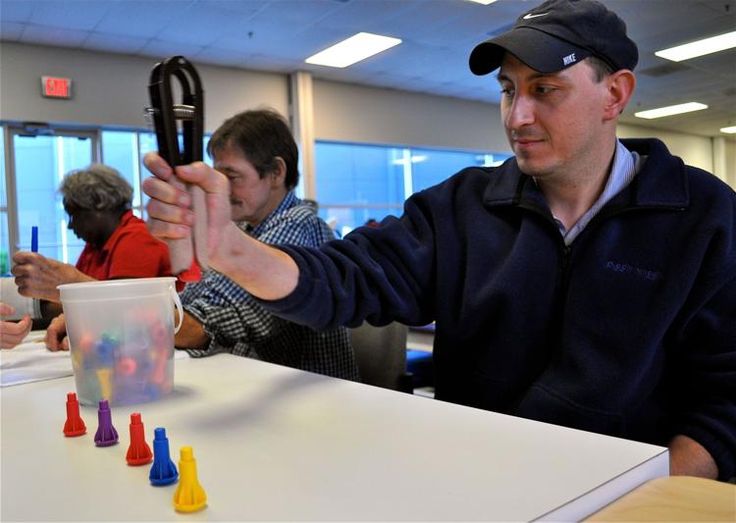Choosing between a career in occupational therapy and physical therapy can be a pivotal decision for aspiring therapists. While both professions play crucial roles in patient care and rehabilitation, they each offer unique approaches, skill sets, and career opportunities. Understanding the key differences between these two fields will help you make an informed choice that aligns with your passions and professional goals.
In this blog, we’ll delve into the distinct aspects of occupational therapy and physical therapy, guiding you toward the path that best suits your future in the healthcare industry.
Understanding the Roles: Occupational Therapy vs. Physical Therapy
At first glance, occupational therapy (OT) and physical therapy (PT) may seem similar, as both professions are dedicated to improving a patient's quality of life. However, they focus on different aspects of rehabilitation, each playing a unique role in patient care.
Occupational Therapy (OT)
Occupational therapy focuses on helping individuals perform activities of daily living, or "occupations," that are meaningful to them. These can range from basic self-care tasks like dressing and eating to more complex activities such as returning to work or engaging in hobbies. Occupational therapists work with people of all ages who may face physical, cognitive, or emotional challenges, providing them with the skills and tools needed to live as independently as possible. For example, an OT might assist a stroke patient in regaining the ability to dress independently by enhancing fine motor skills or adapting the environment to make the task easier.
OTs often work in diverse settings, including hospitals, schools, rehabilitation centers, nursing homes, and private practice. They may also work in mental health facilities or community organizations, where they assist clients with a range of mental health issues.
Physical Therapy (PT)
Physical therapy, on the other hand, is primarily concerned with improving a patient’s physical function. Physical therapists focus on movement-related issues, helping patients recover from injuries, surgeries, or chronic conditions that affect their ability to move. They work on strengthening muscles, improving flexibility, and reducing pain through exercises, manual therapy, and other techniques. For example, a PT might help a patient recover from knee replacement surgery by developing a regimen of strengthening and stretching exercises aimed at restoring the full range of motion and alleviating pain.
Physical therapists work in hospitals, outpatient clinics, rehabilitation centers, and sports facilities. They may also work in specialized fields such as geriatrics, orthopedics, neurology, or pediatrics, often focusing on specific patient populations or types of injuries.
Educational Pathways: OT vs. PT
While both occupational therapy (OT) and physical therapy (PT) share the goal of improving patients' quality of life, the educational pathways for these professions are distinct, reflecting their different areas of focus.
Occupational Therapy (OT)
To become an occupational therapist, you must first complete an accredited undergraduate degree, typically in fields like psychology, biology, or kinesiology. This usually takes about four years. Following this, a Master's (MOT) or Doctorate (OTD) in Occupational Therapy is required, which generally takes an additional two to three years.
OT programs cover topics such as anatomy, physiology, mental health, and occupational therapy practices. You will also engage in supervised clinical fieldwork to gain hands-on experience. After graduation, passing the National Board for Certification in Occupational Therapy (NBCOT) exam is necessary for licensure.
Physical Therapy (PT)
To become a physical therapist, you must first complete an accredited undergraduate degree, often in exercise science, biology, or a related field. This usually takes four years. Following the undergraduate degree, you must then enroll in a Doctor of Physical Therapy (DPT) program, which typically takes an additional three years to complete.
DPT programs, accredited by the Commission on Accreditation in Physical Therapy Education (CAPTE), include coursework in anatomy, physiology, pathology, and therapeutic techniques, along with extensive clinical fieldwork. This hands-on experience allows you to apply your knowledge under the supervision of licensed physical therapists. After earning your DPT degree, you must pass the National Physical Therapy Examination (NPTE) to obtain licensure and practice as physical therapists.

Specialties: OT vs. PT
Occupational therapy (OT) and physical therapy (PT) each encompass a range of specialized fields that address specific patient needs. Here are some of the key specialties in each profession:
Occupational Therapy (OT)
- Pediatrics: Helping children with developmental, learning, or physical challenges.
- Geriatrics: Addressing issues related to aging, such as arthritis or cognitive decline.
- Hand Therapy: Focusing on injuries and conditions affecting the hands and upper limbs.
- Mental Health: Supporting individuals with emotional and psychological conditions to improve daily functioning.
- Neurological Rehabilitation: Assisting patients with neurological conditions, such as stroke or traumatic brain injury.
Physical Therapy (PT)
- Orthopedics: Treating musculoskeletal issues like fractures, sprains, and arthritis.
- Sports Medicine: Preventing, diagnosing, and treating sports-related injuries.
- Neurology: Working with patients who have neurological conditions, such as Parkinson’s disease or stroke.
- Geriatrics: Addressing mobility and strength concerns in older adults.
- Pediatrics: Treating children with developmental and physical conditions.
Salary and Job Outlook
Both professions offer strong job prospects, but there are some differences in salary and job outlook.
Occupational Therapy (OT)
The demand for occupational therapists is projected to increase by 11% from 2023 to 2033, driven by the growing need for services among the aging population. As of May 2023, the U.S. Bureau of Labor Statistics (BLS) reported a median annual wage of about $96,370 for OTs.
Physical Therapist(PT)
Physical therapists benefit from a robust job market, with significant demand in sports medicine and outpatient settings. According to the Bureau of Labor Statistics (BLS), employment for physical therapists is expected to grow by 14% from 2023 to 2033. As of May 2023, the median annual wage for physical therapists was approximately $99,710, reflecting the advanced training and education required for this profession.
Choosing the Right Path for You
Deciding between physical therapy and occupational therapy ultimately depends on your personal interests and career goals. If you are passionate about helping individuals enhance their daily lives and enjoy working with diverse populations, OT may be the right choice for you.
On the other hand, if you are intrigued by movement science and physical rehabilitation and you enjoy working closely with patients to improve their physical abilities, PT might be a better fit.
Both careers offer the opportunity to make a significant impact and provide rewarding work. To determine the best path for you, consider shadowing professionals in each field, consulting with mentors, and reflecting on your own strengths and interests. This thoughtful approach will help you choose the path that aligns with your aspirations and professional goals.
Conclusion
Occupational therapy and physical therapy are both vital fields within healthcare, each offering unique opportunities to help others. Whether you choose to become an occupational therapist or a physical therapist, you’ll be joining a profession dedicated to improving the lives of patients and making a lasting impact on their health and well-being.
At Verovian AHP Recruitment Agency, we specialize in connecting talented healthcare professionals with the right opportunities to advance their careers. Whether you're drawn to occupational therapy or physical therapy, our team is here to support you in finding roles that align with your skills, interests, and career goals. Explore the diverse opportunities we offer and let us help you make a meaningful impact in the healthcare field.





